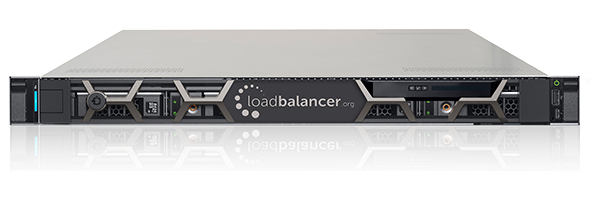
We explore the concept of load balancing, and explain what a load balancer does - and how.
Experience is everything.
At least, it is according to one, well-known consultancy firm. Whether it’s a tourist accessing GPS on a smartphone, an employee searching for a file on a company network, or a doctor looking up a patients’ health records – today, every user wants speed, consistency, and convenience when accessing information.
And to facilitate that, all IT applications must be up and running all the time. Load balancers make this possible. Hidden in data centers around the world, there are millions of load balancers that keep businesses and their applications fully functional 24/7 – making sure users enjoy a seamless and uninterrupted high-quality experience at every single click.

Application challenges
At the simplest level, applications are software programs that have been designed to help people perform tasks. Today’s applications enable us to do everything from creating documents to searching for a new home or accessing our patient records online.
While earlier, applications used to reside on individual PCs and laptops, now most are accessed over the internet using a web browser, from mobile devices or via corporate networks. They rely on centralized servers, which deliver the functionality for the connected devices – so when a user opens a mobile app, they trigger a request via the internet to the central web servers or application servers.
So, what does a load balancer do?
A load balancer does exactly what its name suggests – efficiently balances server load. It sits in between the user, or ‘client’, and the server cluster and distributes all the requests from users (like a video, text, application data, or image) across all servers capable of fulfilling those requests, which may be local within the same data center or geographically dispersed across the internet or private networks.
By utilizing a 'least connection' algorithm, load balancers can evenly distribute the incoming application and network traffic across a group of backend servers, making sure no one server is overloaded – which could degrade performance, or result in a server crashing. They manage and intelligently spread out server load, increasing the capacity and reliability of applications, leading to improved overall application performance. If one server goes down, a load balancer immediately redirects traffic to the remaining healthy servers, thus resulting in a super-fast failover. When any new servers are added to a server pool, a load balancer automatically starts sending requests to it.
In simple words, here’s what happens:
- Traffic comes to your application or site
- A load balancer distributes the traffic across appropriate server nodes
- The node receives the request and delivers a response to the user.
Who needs a load balancer?
Customer expectations are rising for digital channels for metrics such as site speed and stability. And to meet these customer expectations, businesses must ensure that their digital experiences are truly ‘zero friction’. Therefore, organizations that have high levels of website activity or mission-critical web and mobile applications that are used by large numbers of customers or employees – should use load balancers.
Such organizations need more than one server to manage the high volume of concurrent requests, and using a load balancer helps them share the traffic load across different physical or virtual servers. While layer 4 load balancers act upon data found in network and transport layer protocols (IP, TCP, FTP, UDP), layer 7 distributes requests based upon data found in application layer protocols such as HTTP.
What types of load balancers are available?
- Hardware devices (like the one pictured above) that physically live in organizations' IT departments or data centers
- Software solutions that can be installed on physical or virtual machines in data centers, on-premises, or in the cloud.
Organizations looking for simple load balancing capabilities should go for standard hardware or software-based load balancers as these are cost-effective and easy to install and manage. Some vendors combine load balancing functionality with additional capabilities, such as security features. For example, Loadbalancer.org appliances come complete with a web application firewall (WAF) as a standard feature.
Load balancers are most commonly deployed in active-passive pairs to ensure zero downtime in business-critical applications. All traffic can then be redirected to the redundant device, both to provide business continuity in the event of a failure and to remove the need for scheduled downtime for maintenance.
What are the benefits of using a load balancer?
- High availability: ensuring applications are always accessible
- Scalability: making it easy to change server infrastructure without disrupting the user experience
- Security: adding additional layers of security to your IT applications
- Zero downtime: instantly and automatically rerouting traffic to an alternate server in the cluster, eliminating interruption in application availability
- Redundancy: if something goes wrong with one server, the backup servers take over and restart applications that were running on the failed server
- IT flexibility: allowing technicians to disconnect, patch, upgrade and reconnect servers without any disruption for users
- Efficiency: providing consistent and fast app performance for thousands of concurrent users.
Visit our resources section to learn more about load balancers, how they work in conjunction with specific industries like storage, healthcare, print, and for specific guides on how to load balance dozens of popular applications.
